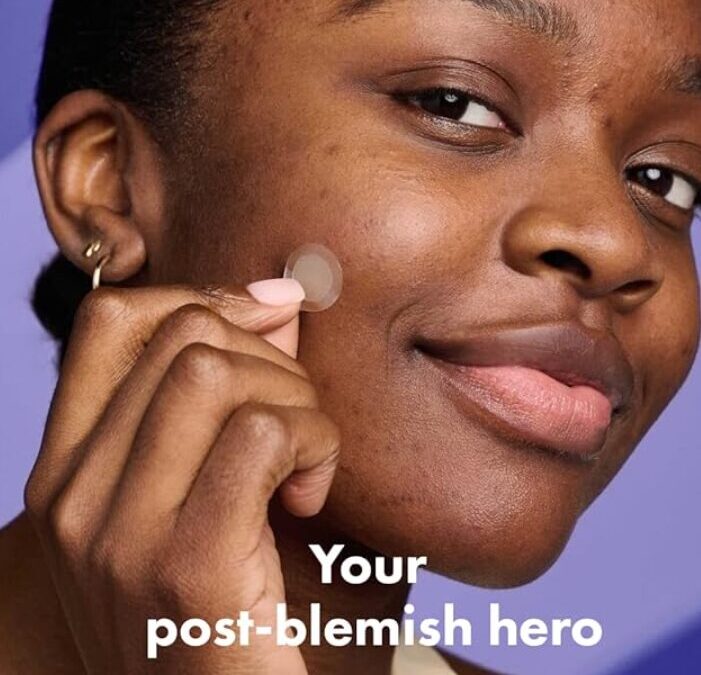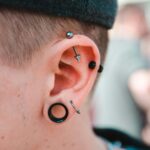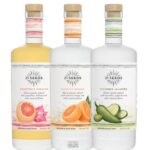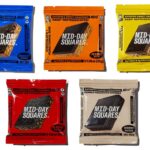The story of Hero Cosmetics exemplifies how identifying an unmet consumer need, careful brand building, and strategic market positioning can create extraordinary value in the beauty industry.
Founder Ju Rhyu transformed a simple acne patch into a multimillion-dollar skincare empire, offering valuable lessons for aspiring entrepreneurs.

Origin Story: The South Korean Inspiration
While teaching English in South Korea, Ju Rhyu encountered hydrocolloid acne patches—a standard skincare solution in Asian markets that was virtually unknown in the United States.
Initially developed for wound healing, these patches effectively treated acne by creating a moist environment that promoted healing while protecting the area from further irritation. Rhyu experienced firsthand how these patches elegantly solved a universal problem. Rhyu observed people in her office wearing these patches on their faces during the day, in public.
What makes this origin story particularly compelling from a business perspective is how Rhyu identified a product gap and a significant cultural arbitrage opportunity.
The Asian beauty market had already validated the concept, reducing the market acceptance risk while offering a proven template for success.
Market Entry and Positioning Strategy
Rather than rushing to market, Rhyu spent nearly two years developing her product and brand strategy. She recognized that success in the American market would require more than just importing an Asian beauty solution – it needed to be repositioned for Western consumers with different beauty routines and expectations.
What’s particularly instructive about Hero’s approach was its initial focus on a single hero product—the Mighty Patch. This strategy allowed the company to establish category leadership and build brand recognition before expanding its product line. The singular focus also enabled efficient marketing spending and clear messaging, which is critical for a startup with limited resources.
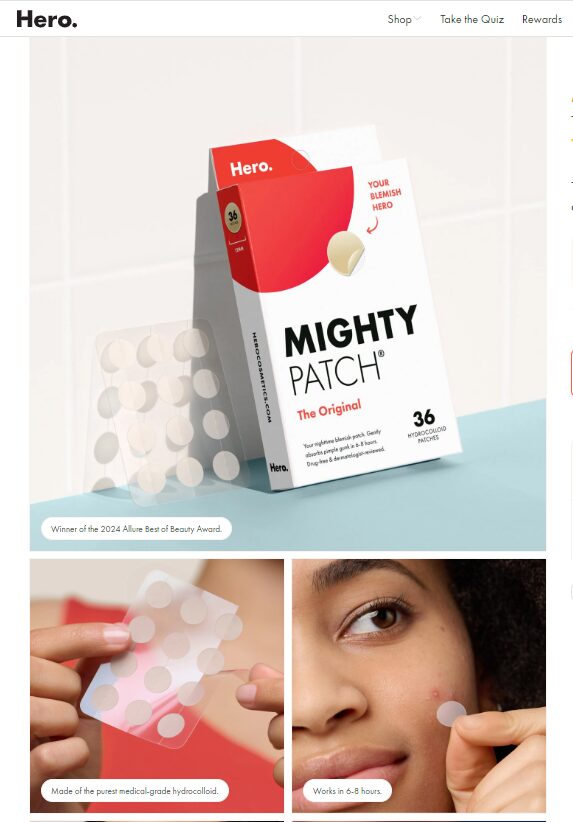
Building the Brand: Key Strategic Decisions
The brand’s name, “Hero,” was a masterclass in marketing psychology. It positioned the product as the consumer’s ally in fighting acne rather than focusing on the problem itself. This positive positioning represented a significant departure from traditional acne treatment marketing, which often emphasized the embarrassment and frustration of breakouts.
Core Strategic Insights for Entrepreneurs:
First is the power of cultural arbitrage in identifying market opportunities. Rhyu’s experience in South Korea gave her unique insight into a proven solution that could be adapted for a new market. This demonstrates how entrepreneurs can leverage cross-cultural experiences to identify opportunities that might not be apparent to others. The key insight here is that sometimes the best innovations aren’t new inventions but the thoughtful translation of existing solutions to new markets.
Second, Hero Cosmetics’ initial focus on mastering direct-to-consumer (DTC) sales through Amazon and their website before expanding to retail demonstrates the importance of building a strong foundation and gathering customer feedback. This digital-first approach allowed them to refine their product and messaging based on actual customer data before making more significant retail investments. The company’s eventual expansion into Target and other major retailers was built on a foundation of proven demand and customer satisfaction.
Third, the company’s approach to product expansion provides a valuable lesson in brand extension.
Rather than immediately launching a full line of skincare products, Hero established dominance in the acne patch category before strategically expanding into complementary products. This methodical approach to growth allowed them to maintain brand coherence while building customer trust.
Strategic Marketing Evolution
A particularly insightful aspect of Hero’s growth strategy was their understanding of the changing dynamics in beauty marketing. While traditional beauty brands often relied on aspirational marketing and celebrity endorsements, Hero embraced authenticity and user-generated content. They recognized that in the age of social media, customers were more interested in actual results from real people than in glossy advertisements.
The $630 million acquisition by Church & Dwight in 2022 validates not only the company’s financial success but also the strategic soundness of its approach to brand building. The acquisition price, representing approximately 6.5x sales, demonstrates the premium value placed on brands that successfully create and dominate new category niches.
For entrepreneurs studying this case, perhaps the most important lesson is how Hero Cosmetics balanced innovation with proven concepts. They didn’t invent the hydrocolloid patch, but they revolutionized its marketing and distribution in the Western market.
This illustrates that successful entrepreneurship often isn’t about creating something entirely new but executing a proven concept in a new way or market.
The Hero Cosmetics story provides a masterclass in modern brand building, demonstrating how deep customer understanding, strategic focus, and thoughtful market positioning can create significant value in even the most competitive industries. For entrepreneurs, it reinforces the importance of identifying market gaps, building strong foundations before scaling, and maintaining strategic focus throughout the growth journey.
What are you noticing that might turn into an opportunity?
Connect with Jeff at The Marketing Sage Consultancy. Interested in setting up a call with me? Use my calendly to schedule a time to talk. The call is free, and we can discuss your brand and marketing needs.
If you want to learn more about my new offering, The Trusted Advisor Board, you can click here to learn the details. Feel free to email me at jeffslater@themarketing sage.com or text 919 720 0995. Thanks for your interest in working with The Marketing Sage Consultancy.

